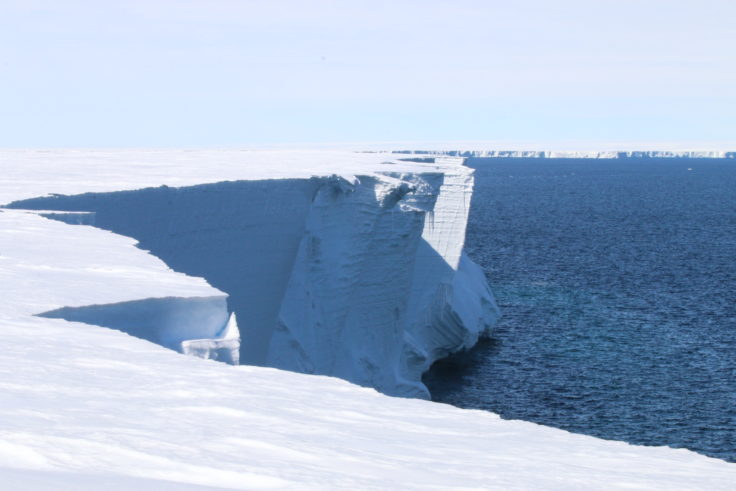Global S&T Development Trend Analysis Platform of Resources and Environment
| Solar heat drives rapid melting of Antarctic Ice Shelf | |
| admin | |
| 2019-04-29 | |
| 发布年 | 2019 |
| 语种 | 英语 |
| 国家 | 英国 |
| 领域 | 资源环境 |
| 正文(英文) | A section of the world’s largest ice shelf in Antarctica – around the size of Spain – is melting 10 times faster than average and warm ocean currents beneath it are to blame, a new study reveals. The findings are published in the Journal Nature Geoscience this week (29 April 2019). A team from the National Institute of Water and Atmospheric Research (NIWA) in New Zealand, University of Cambridge and British Antarctic Survey, studied the north-western corner of the Ross Ice Shelf to build up a record of how it is melting, and the key processes driving it.  Lead author Craig Stewart from NIWA says:
The findings are significant because the stability of ice shelves is generally thought to be related to their exposure to warm deep ocean water. However, the study shows that surface ocean heat also plays a crucial role. Although the interactions between ice and ocean occurring hundreds of metres below the surface of ice shelves seem remote, they have a direct impact on long-term sea level. Floating ice shelves stabilize the ice sheet, and loss of the major ice shelves would lead to accelerating ice flow and sea level rise of several metres or more. Currently the largest ice shelves are melting slowly; but smaller ice shelves that float in seawater just 3 degrees above the freezing point are melting 100-200 times faster, showing the impact that warm ocean water can have. The team collected four years of data from an oceanographic mooring installed under the Ross Ice Shelf with instruments measuring temperature, salinity and currents. The mooring also included an echo-sounder pointed upwards at the bottom of the ice to measure melt rates. Installing the mooring required drilling a hole through 260 metres of ice and then lowering it into 600 m of ocean beneath the shelf. In addition, the team used extremely sensitive custom-made radars to survey the changing thickness of the ice shelf. Dr Keith Nicholls, an oceanographer at British Antarctic Survey, says:
Information from the instruments deployed on the mooring showed that warm water from the upper layer of the open sea transports heat into the cavity under the ice shelf causing melt rates to nearly triple during summer. The melting is affected by a large ocean expanse in front of the Ross Sea Ice Shelf that is devoid of sea ice due to strong offshore winds. This area, known as the Ross Sea Polynya, absorbs solar heat quickly in summer and in turn influences the ice shelf cavity. Author Craig Stewart from NIWA concludes:
Basal melting of Ross Ice Shelf from solar heat absorption in an ice-front polynya is published in Nature Geoscience. Read it here |
| URL | 查看原文 |
| 来源平台 | British Antarctic Survey |
| 文献类型 | 新闻 |
| 条目标识符 | http://119.78.100.173/C666/handle/2XK7JSWQ/233712 |
| 专题 | 资源环境科学 |
| 推荐引用方式 GB/T 7714 | admin. Solar heat drives rapid melting of Antarctic Ice Shelf. 2019. |
| 条目包含的文件 | 条目无相关文件。 | |||||
| 个性服务 |
| 推荐该条目 |
| 保存到收藏夹 |
| 查看访问统计 |
| 导出为Endnote文件 |
| 谷歌学术 |
| 谷歌学术中相似的文章 |
| [admin]的文章 |
| 百度学术 |
| 百度学术中相似的文章 |
| [admin]的文章 |
| 必应学术 |
| 必应学术中相似的文章 |
| [admin]的文章 |
| 相关权益政策 |
| 暂无数据 |
| 收藏/分享 |
除非特别说明,本系统中所有内容都受版权保护,并保留所有权利。
修改评论